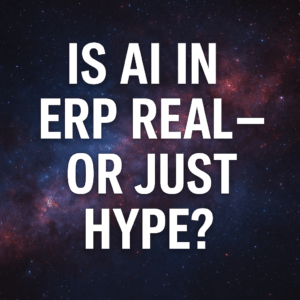When defining a digital strategy roadmap for 2024 and beyond, it is crucial to understand the emerging technology trends. What are these trends?
In guiding clients to formulate their digital strategies and roadmaps, a primary consideration is the current technology trends in the market. As the world undergoes rapid changes, it becomes imperative to understand these shifts. The aim is to delineate a digital strategy and roadmap tailored to an organization’s needs. This discussion will explore the five most significant trends observed by our team relevant to organizations undergoing digital transformations in 2024 and beyond.

Table of Contents
ToggleRealization of AI and Analytics
In 2022-2023, there was a noticeable breakthrough, or a tipping point, in adopting ChatGPT, OpenAI, and other artificial intelligence solutions at the consumer level. This evolution has elevated the standards and anticipations regarding artificial intelligence and analytics capabilities for enterprises.
With the broader consumer base now familiar with tools like ChatGPT and how OpenAI solutions such as DALL·E can benefit their daily lives, there is a growing realization of the potential benefits of enterprise solutions. This insight has illuminated the possibilities of harnessing AI, analytics, business intelligence, and other long-standing technologies often misunderstood or underutilized within organizations.
As we anticipate the developments of 2024 and beyond, we foresee significant advancements in integrating and utilizing AI within enterprise structures. This pertains not only to how enterprises harness technology but also to how ERP vendors and other enterprise technology providers integrate AI into their offerings.
With a more profound understanding of AI’s potential, influenced by models like OpenAI and ChatGPT, expectations regarding enterprise technology capabilities have heightened. Therefore, 2024 is projected to be the pivotal year when artificial intelligence and analytics attain widespread adoption at the enterprise level.
Digital Transformation Failures
Another trend anticipated to persist in 2024 is the escalation of digital transformation failures. While there are advancements and introductions of intriguing technologies in the marketplace, implementing these technologies often face challenges, leading to an increasing rate of failures. Several factors contribute to this increase.
Firstly, many enterprise vendors push their clients away from legacy on-premise systems towards cloud solutions, particularly within the ERP software sector. Established providers like SAP, Oracle, and Microsoft, which have extensive user bases for their on-premise ERP systems, are now compelling those users to transition to cloud solutions.
This shift generates an artificial demand and a concurrent surge in the number of implementations. Many organizations, whether prepared or not, are thrust into digital transformation due to this vendor-driven change. Consequently, unprepared organizations that don’t require a transformation face more significant challenges and potential failures.
Secondly, some of the newer cloud solutions lack the maturity of their on-premise predecessors. Although these cloud solutions can offer unique capabilities not present in on-premise solutions, they sometimes miss out on essential processes developed over the years for on-premise systems. Until these legacy vendors fully transition their functionalities and capabilities to the cloud, disparities between previous and upcoming technologies will persist.
Lastly, labor shortages, driven by the sudden and artificial demand for digital transformations, exacerbate the problem. There’s a deficit of consultants familiar with specific technologies, primarily because numerous transformations coincide. This rush resembles the surge witnessed during the transition to Y2K, where the demand outpaced the available resources and consultants to handle the projects.
Based on these factors, the proportion of digital transformation failures will continue its upward trajectory. This trend, which began in earnest in 2023, is expected to further intensify in 2024 and beyond.

Deterioration of ERP Systems
Another trend anticipated for 2024 and beyond is the decline in market share for ERP software vendors. While the ERP software category is not predicted to become obsolete, major ERP software providers will likely witness diminishing market shares as they face competition from emergent software categories. Several factors and alternative software types contribute to this potential decline:
Software Platforms: Some providers now offer software platforms rather than traditional all-encompassing ERP systems. These platforms grant users greater flexibility, allowing them to develop their products or utilize third-party offerings tailored to specific platforms.
Salesforce, for example, has its Force platform on which it built its primary system. This platform has been made available to third-party developers and even Salesforce’s customers, enabling the development of diverse products and capabilities that might extend beyond Salesforce CRM’s intrinsic functions. Such platforms offer organizations more versatility and choices compared to conventional ERP systems.
Best-of-Breed Model: An increasing number of organizations are demonstrating reduced tolerance for expansive ERP implementations. Instead, they concentrate on individual, organizational components or specific functions that deliver quicker value within their digital transformations.
For instance, an organization primarily focused on augmenting its top-line revenue might opt for a specialized CRM (Customer Relationship Management) system rather than overhauling its ERP systems. Such targeted solutions often provide immediate value with reduced costs and risks, making this “best-of-breed” technology approach a growing alternative to traditional ERP systems.
Interoperable Solutions: Vendors offering interoperable solutions also contribute to eroding traditional ERP market shares. Software products like Palantir and Snowflake are designed not to replace an entire back-end ERP system but to offer workflow automation, business intelligence, and reporting capabilities that complement pre-existing systems within an organization.
In summary, these represent three primary ways the conventional ERP software market could face challenges, losing market share to competing entities in the sector.
Software Platforms
Another trend to monitor is the rising significance of software platforms. While I previously discussed this in the context of a software category eroding the market share of ERP software, it’s crucial to emphasize that software platforms represent a forward-looking trend. This is not merely due to their impact on ERP vendors but because numerous organizations gravitate towards this approach.
Instead of heavily investing in a singular technology provider, organizations opt for software platforms that progressively offer the flexibility to expand and incorporate new technical capabilities. This strategy can present a lower-risk method of technology deployment, eliminating the need to overhaul all systems simultaneously.
Within software platforms, the “low-code, no-code” movement is gaining prominence. An increasing number of software vendors offer low-code or no-code solutions, enabling the deployment of new technologies with greater flexibility.
This movement eliminates the need for extensive customizations or in-depth technical expertise to modify or support the software. Even though some consider the low-code, no-code movement to be its distinct category, it’s increasingly integrated within ERP and other enterprise technologies.
In conclusion, we anticipate a surge in the adoption and momentum of software platforms in 2024 and beyond.
IT Labor Shortage
The fifth and concluding trend for 2024 pertains to IT labor shortages. Observations from 2023 indicate a burgeoning shortage of IT professionals, and this trend is anticipated to persist and intensify in 2024. While there is a broader challenge in securing skilled talent across various functions, IT stands out given its specialized and high-skill nature. Numerous digital transformations and the rapid pace of technological change exacerbate this shortage. Such a landscape makes it increasingly challenging for the workforce to stay abreast of evolving technological requirements.
Consequently, organizations will face difficulties in sourcing talent to maintain their current technological frameworks and support their digital transformation journeys. This impending challenge in acquiring the necessary IT skills and navigating labor scarcity is predicted to be one of the most pronounced trends in 2024 and beyond.
Understanding these overarching trends in the IT and digital transformation sectors for 2024 is crucial. One can refer to specialized resources and studies for further insights into emerging technological trends, best practices, and lessons drawn from global digital transformations.
I would enjoy brainstorming ideas with you if you are looking to strategize an upcoming transformation or are looking at selecting an ERP system, so please feel free to contact me at eric.kimberling@thirdstage-consulting.com. I am happy to be a sounding board as you continue your digital transformation journey.





